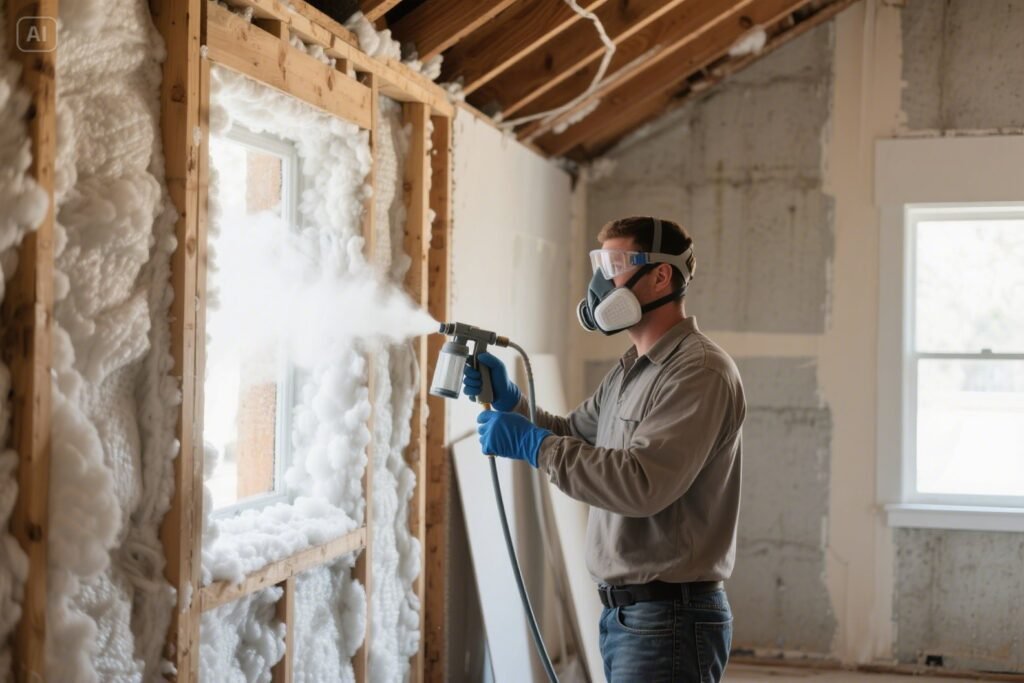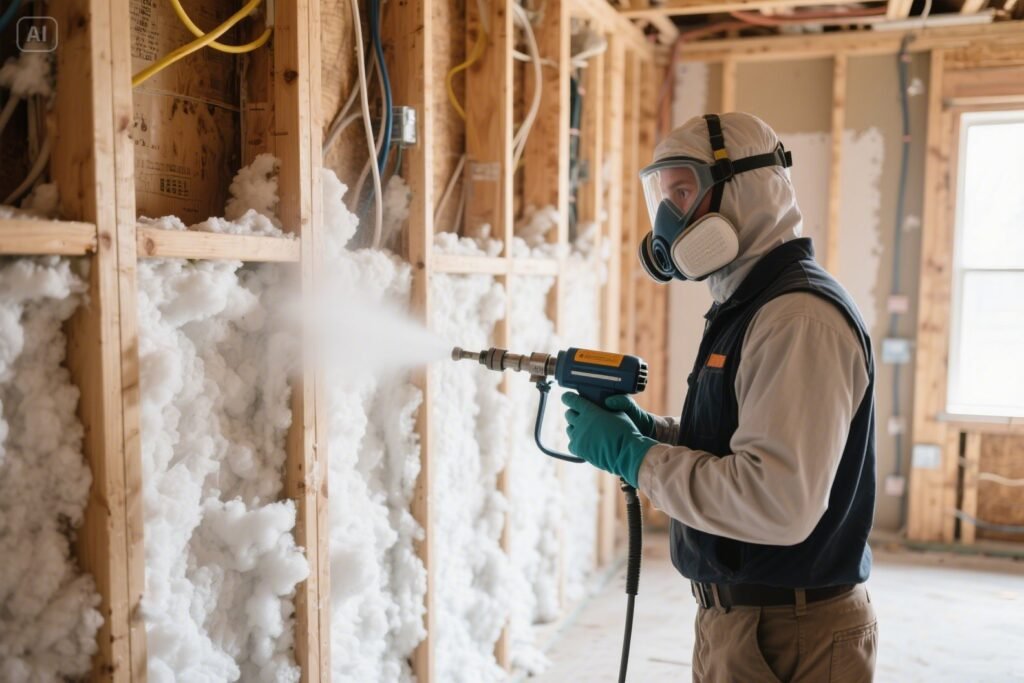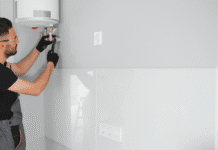Table of Contents
Introduction
Closed Cell Spray Foam is a powerful insulation choice widely used in both residential and commercial buildings. Known for its excellent thermal resistance (R-value of 6 to 7 per inch), Closed Cell Spray Foam helps reduce energy loss, seal air gaps, and block moisture intrusion. This article explores its top benefits, typical applications like basements, walls, and attics, and how it compares to open cell foam.
You’ll also discover its role in improving structural integrity, reducing utility bills, and preventing mold. With quick installation and lasting performance, it offers a high return on investment. Closed Cell Spray continues to be a reliable solution for improving comfort, protection, and energy efficiency in modern construction.
| Feature | Application | Benefit | Performance | Extra Value |
| High R-value | Walls, ceilings | Strong insulation | Heat barrier | Energy savings |
| Moisture resistance | Basements, crawlspaces | Mold prevention | Vapor protection | Healthier air |
| Air sealing | Attics, gaps | Draft elimination | Airtight coverage | Comfort boost |
| Structural strength | Roofs, walls | Added support | Durable finish | Longevity |
| Long lifespan | Whole building | No sag or breakdown | Stable over time | Lower upkeep |
| Energy efficiency | Entire home | Cuts utility costs | HVAC relief | Cost-effective |
| Quick installation | All areas | Fast curing | Rapid seal | Saves time |
| Vapor barrier | Humid zones | Blocks moisture | Dry interiors | Damage control |
| Climate durability | Exterior structures | Weather resistance | Consistent insulation | Year-round use |
| High ROI | Homes, businesses | Investment value | Improved performance | Property increase |
Benefits of Closed Cell Spray Foam
Closed Cell Spray Foam offers unmatched performance in residential and commercial settings:
- Excellent R-value of 6 to 7 per inch
- Resists moisture, helping prevent mold and mildew
- Adds strength and stability to wall and roof systems
- Seals cracks and gaps for superior air-tightness
- Reduces energy bills significantly over time

Common Areas to Apply It
Closed Cell Spray Foam works well in many construction areas:
- Exterior walls for improved insulation
- Attics to prevent air and moisture leakage
- Crawl spaces to reduce dampness and mold risk
- Basements where water exposure is high
- Roofs and ceilings to block heat loss
Closed Cell vs. Open Cell Spray Foam
Key Differences
Compared to open-cell spray foam, the spray foam has a greater R-value and a denser structure.. It offers better moisture resistance and structural support, making it suitable for outdoor and high-exposure areas. Despite being softer, open cell foam is ideal for interior walls since it absorbs sound well. Choosing between the two depends on budget, insulation goals, and whether air or moisture control is more critical for the application.

Performance and Use Cases
The spray performs best in basements, exterior walls, and commercial buildings due to its vapor barrier properties. It’s also preferred in flood-prone regions or places with temperature extremes. Open-cell foam is ideal for less-exposed indoor spaces and noise control. Both have their uses, but Closed Cell Spray Foam is the go-to option where long-term durability and resistance to environmental stress are top priorities.
How It’s Installed
Spray Foam is installed using specialized spray equipment. The chemicals mix and expand rapidly when applied, filling cavities and hard-to-reach spaces. It cures within minutes, forming a dense, airtight layer. The process requires skilled professionals wearing protective gear. Surfaces must be clean, dry, and properly prepped. Hiring a certified installer ensures consistent coverage and maximizes the performance of Cell Spray Foam for thermal protection and moisture control in buildings.
Energy Efficiency and Cost Savings
Closed Cell Spray Foam is known for lowering energy costs by reducing air leakage and improving indoor temperature control. Its high R-value per inch allows walls and ceilings to resist heat transfer effectively. As a result, heating and cooling systems operate more efficiently, cutting electricity or gas bills. Though initial installation is costly, the return on investment is seen in long-term energy savings, comfort improvement, and reduced wear on HVAC equipment over time.

Moisture and Mold Protection
One significant advantage of Cell Spray Foam is its moisture resistance. Once cured, the foam becomes a vapor barrier that blocks water intrusion and prevents dampness from seeping into walls and ceilings. This lessens the chance of structural deterioration and mold growth. Cell Spray Foam is especially effective in basements, crawl spaces, and humid climates where moisture problems are common. It enhances indoor air quality while protecting the home from long-term water-related damage.
Durability and Long-Term Value
Though Cell Spray Foam may cost more than traditional insulation, its durability and performance make it a worthwhile investment. It doesn’t sag, settle, or degrade over time like fiberglass or cellulose. With proper installation, it can last for decades without needing replacement. Closed Cell Spray Foam also strengthens wall systems, helping them withstand environmental stress. The added structural support and consistent energy efficiency contribute to its long-lasting value in any building.

Right for You?
Spray Foam is ideal for homeowners, builders, or businesses seeking superior insulation and protection. It’s perfect for areas exposed to moisture, temperature extremes, or frequent weather changes. If you’re planning new construction or upgrading insulation, Spray Foam offers long-term energy savings, better indoor air quality, and structural resilience. Consult a professional to see if it suits your space and climate needs for maximum performance and protection.
Conclusion
Closed Cell Spray Foam is an innovative insulation solution offering excellent thermal resistance, moisture control, and structural strength. Its ability to lower energy costs, resist mold, and enhance durability makes it ideal for homes and commercial buildings alike. Though it requires professional installation and has higher upfront costs, the long-term benefits in comfort, efficiency, and protection make Closed Cell Spray Foam a reliable and valuable choice for modern insulation needs.
Want to know about “Use an Airless Spray Painter to Color Your World” Check out our “Home Improvement” category.
FAQs
It creates an airtight seal that reduces heat loss or gain, helping your HVAC system work more efficiently and ultimately lowering energy consumption and monthly utility bills.
It’s commonly applied in exterior walls, attics, crawl spaces, basements, and ceilings to prevent air leaks, control moisture, and increase structural durability.
With proper installation, it can last several decades without sagging, settling, or losing performance, offering long-term value and minimal need for maintenance or replacement.
















